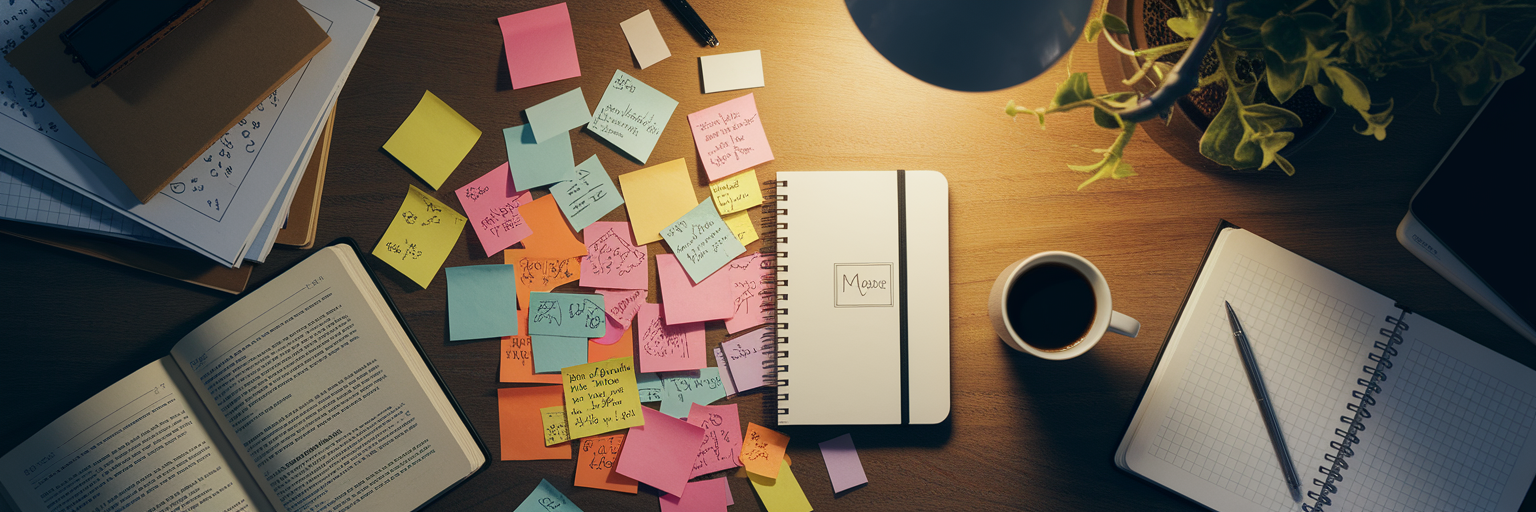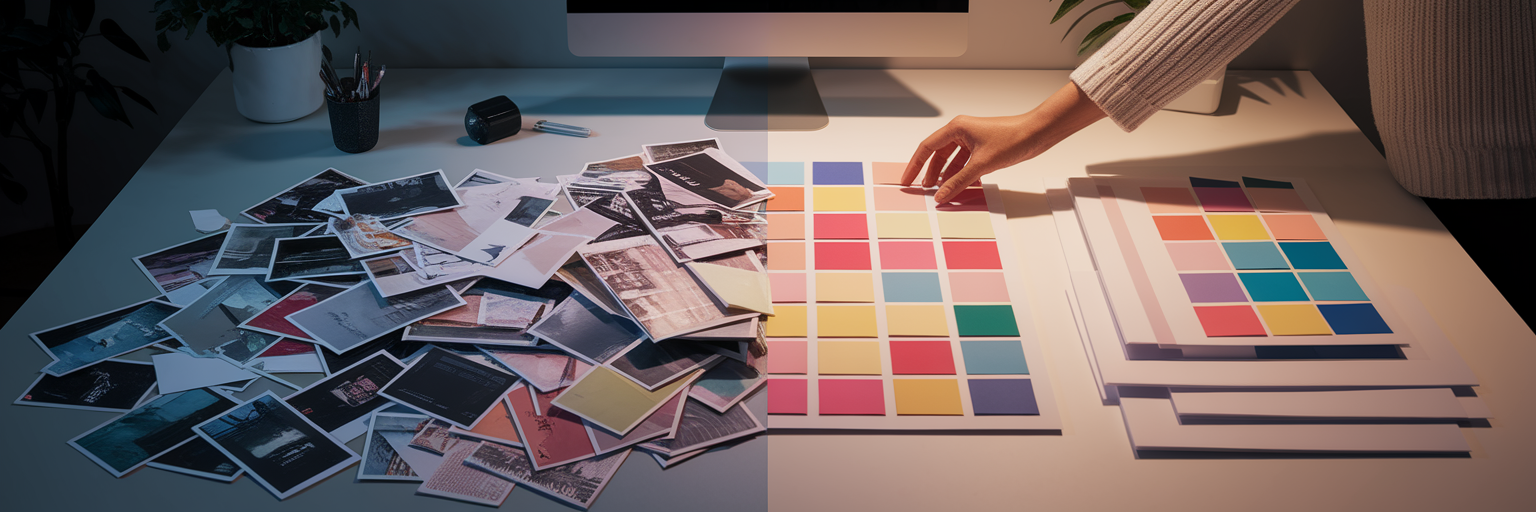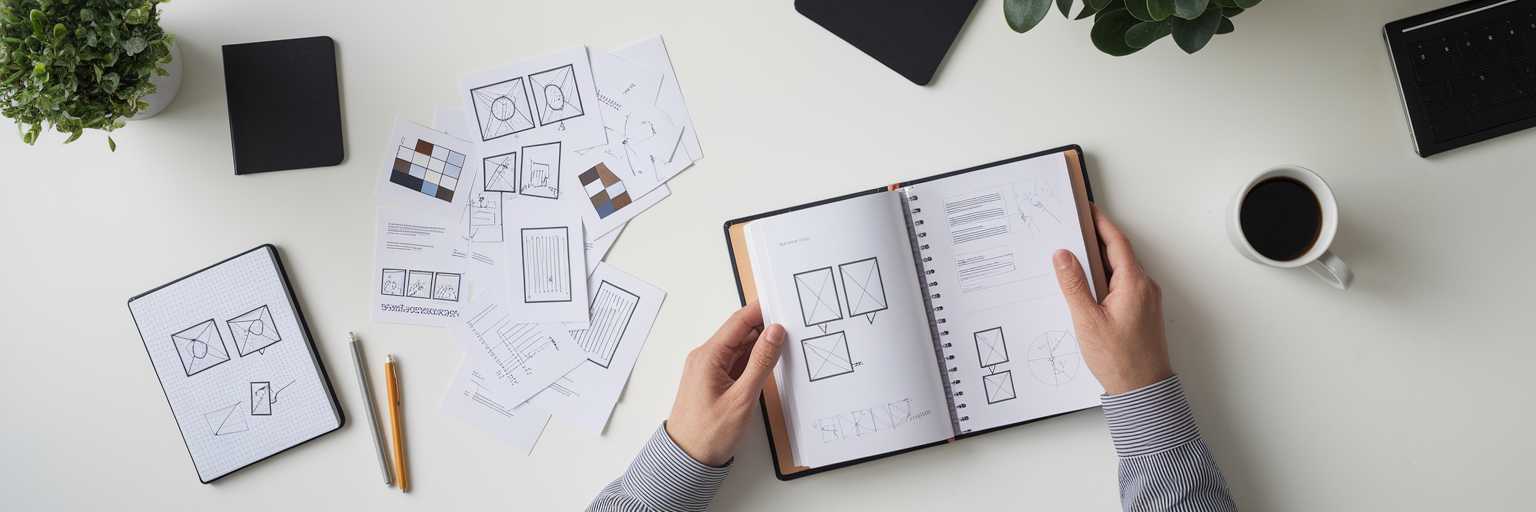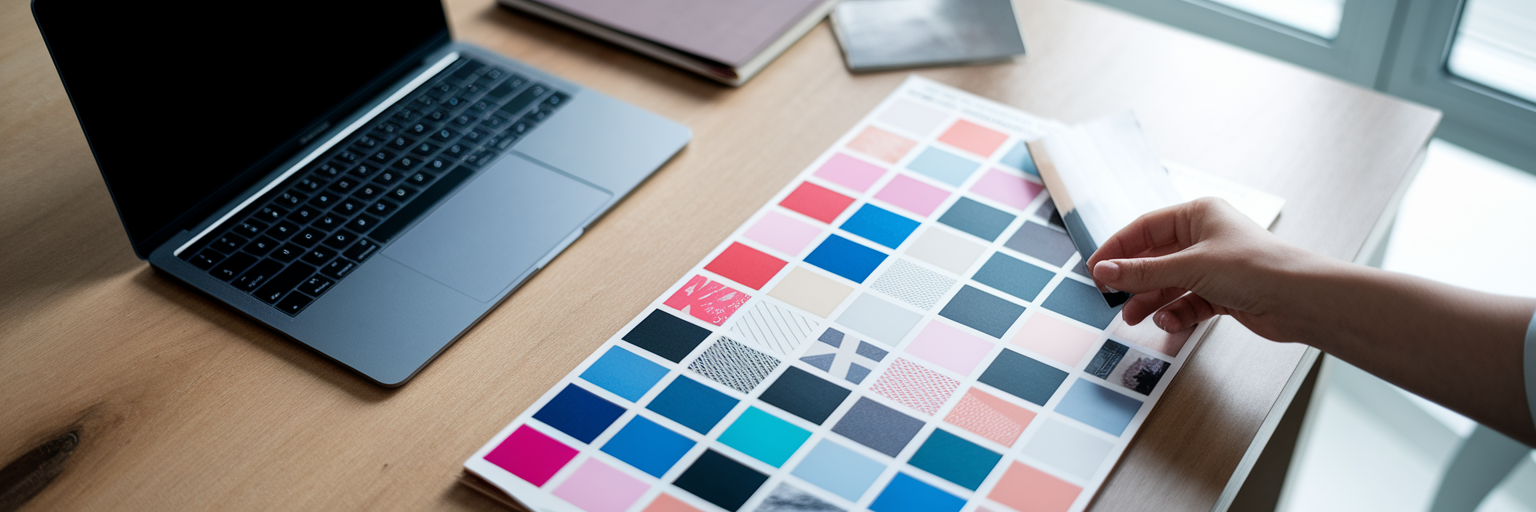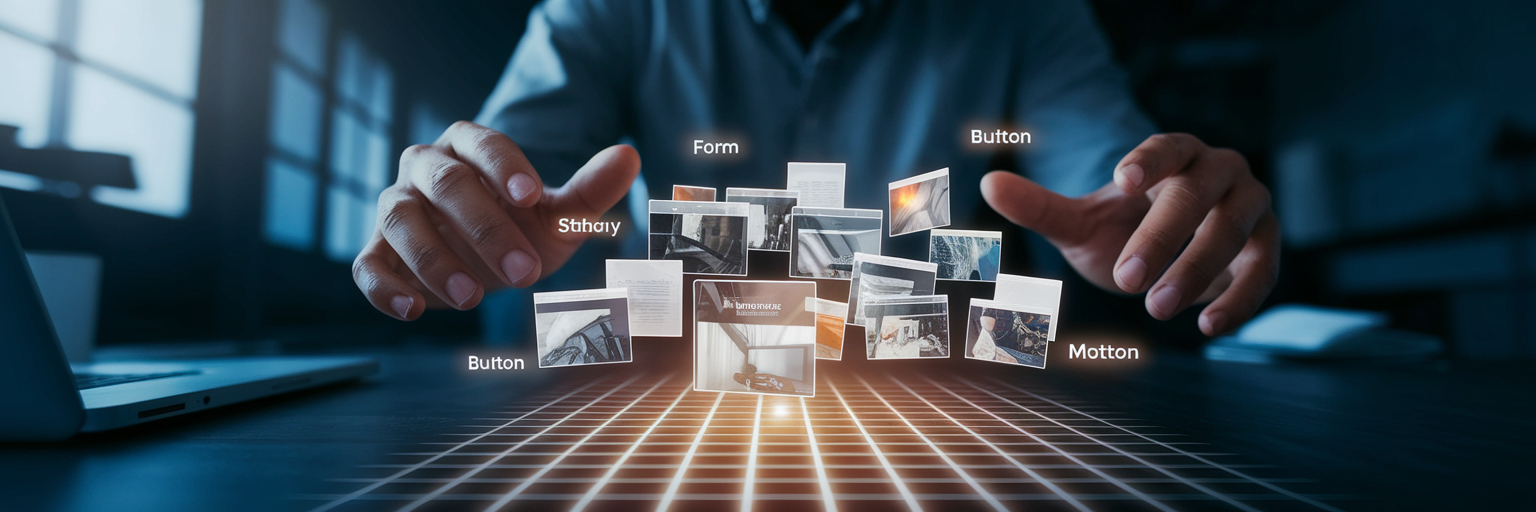We have all been there. You have forty-two browser tabs open, a desktop littered with screenshots, and a vague memory of that one perfect font you saw last week. This is the paradox of modern creativity. We are surrounded by an endless stream of inspiration, yet we often feel stuck, unable to channel it into actual work. The problem is not a lack of ideas, but a lack of system.
From Digital Hoarding to Intentional Curation
The first step is a mental shift from passive digital hoarding to active, intentional curation. It is easy to fall into the habit of saving everything that looks remotely interesting, creating a digital junk drawer that is impossible to navigate. True creativity is not about collecting more, it is about collecting smarter. The goal is to build a library, not a landfill.
Before you hit that bookmark button, ask yourself one simple question: “Why am I saving this?” Is it for a specific project? Does it solve a design problem you are facing? Or does it just look cool? Answering this question transforms a random click into a deliberate act. This is the foundation of how to curate design ideas effectively.
The value of a saved item multiplies when you add context at the moment of capture. A quick tag like ‘#typography’ or a short note like “love the use of negative space for the CTA” gives your future self a breadcrumb trail to follow. This small habit is what turns a chaotic collection into a strategic, searchable asset that actually fuels your work instead of overwhelming it.
Building Your Central Inspiration Hub
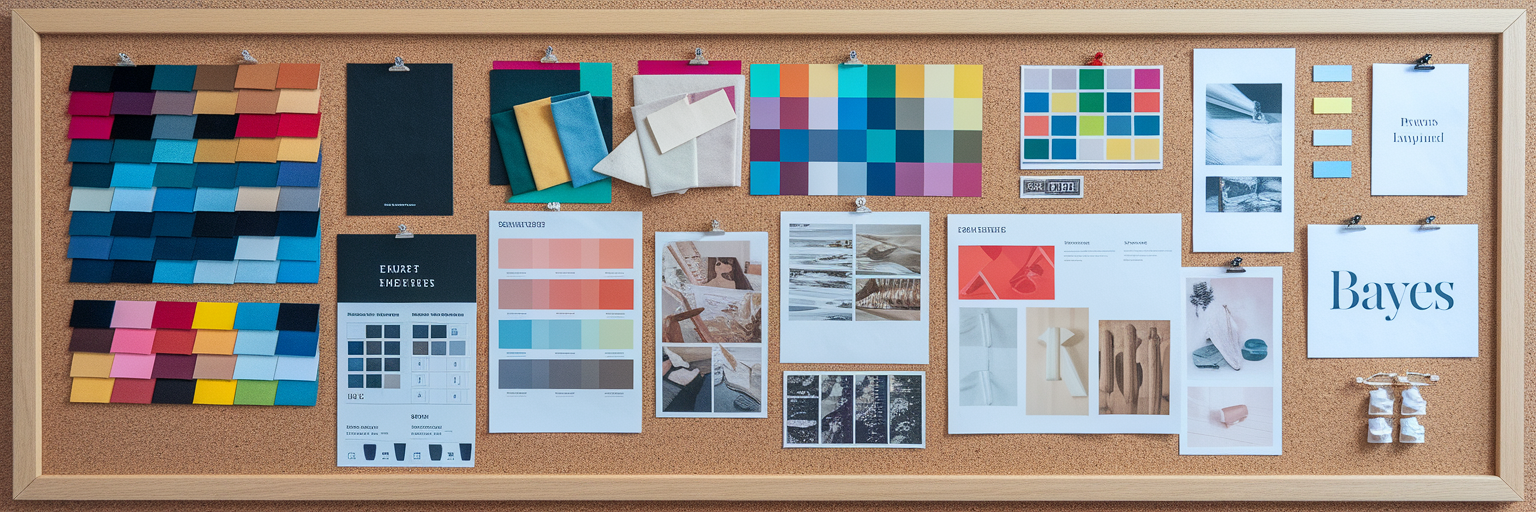
With an intentional mindset in place, the next step is to build the infrastructure to support it. This is not about finding a single magic folder. It is about creating a central hub where your curated ideas can live, breathe, and connect with one another. This hub becomes your external brain, ready to serve up the right idea at the right time.
Defining Your Personal Moodboard System
A personal design moodboard system is more than just a single board for a single project. Think of it as your own private, evolving library of visual solutions. Unlike a messy downloads folder filled with cryptically named files, this system is organized, searchable, and built for creative discovery. It might contain project-specific collections, boards for different styles, or a swipe file of brilliant UI patterns.
Choosing the Right Tools for Your Workflow
The best tool is the one that disappears into your workflow. Some creatives thrive with physical corkboards, while others prefer the infinite canvas of design software. For those who gather inspiration from across the web, a visual bookmarking tool is often the most seamless solution. These tools integrate directly into your browser, making it effortless to capture, tag, and organize ideas without breaking your flow. Bookmarkify, for example, is built specifically for this purpose, turning your browser into a powerful curation machine.
| Tool Type |
Best For |
Key Advantage |
Potential Drawback |
| Visual Bookmarking Tools (e.g., Bookmarkify) |
Quickly saving and tagging live websites, images, and videos. |
Seamless browser integration and powerful search/filtering. |
May require a subscription for advanced features. |
| Design Software (e.g., Figma, Milanote) |
Creating project-specific moodboards with deep visual context. |
Direct integration with the design canvas and collaborative features. |
Can become slow and disorganized if not managed carefully. |
| Physical Boards (e.g., Corkboards) |
Tactile and hands-on brainstorming for textures and print work. |
Encourages offline thinking and serendipitous connections. |
Not searchable, scalable, or easily shareable with remote teams. |
Creating a Powerful Organization System
Once you have chosen your tool, the real work begins. A powerful organization system allows you to organize creative inspiration in a way that makes sense to you. Use tags generously. Think in terms of elements (‘UI-animation’, ‘font-pairing’, ‘color-palette’), projects (‘Project-X’, ‘Client-Y’), and even feelings (‘energetic’, ‘calm’). With a tool like Bookmarkify, you can add unlimited tags and then filter your collection with a few clicks, instantly surfacing relevant ideas. You can even find a wealth of ideas on our dedicated page for creative inspiration to get started.
A Practical Workflow for Daily Curation
An organized hub is only useful if you consistently feed it with high-quality ideas. The key is to build a sustainable daily habit that respects your time and focus. Instead of aimlessly scrolling through endless feeds, a structured approach ensures you get the maximum value in minimum time. These creative workflow tips are designed to be simple and effective.
Here is a practical routine you can adopt today:
- Set a Timer: Dedicate a focused 15 to 20 minute block each day for browsing daily inspiration feeds for designers. This simple constraint prevents the "one more scroll" trap and forces you to be selective. It turns a potential time sink into a productive, focused activity.
- Capture with Context: When you find something worth saving, use a browser extension to capture it instantly. As you save it, add those crucial tags and a quick note. Why did it catch your eye? What element could you use? This context is what makes your library truly powerful.
- Weekly Review: Set aside 30 minutes at the end of each week to prune your collection. Refine your tags, merge similar ideas, and delete anything that no longer feels relevant. This keeps your inspiration library fresh, valuable, and ready for your next project.
This workflow is much easier with tools designed for it. Bookmarkify’s Chrome extension allows for instant capture, while our Daily Inspiration feed delivers six fresh, high-quality ideas every day. It is a pre-vetted source that respects your time, helping you stay inspired without the noise.
From Inspiration to Actionable Design

Collecting inspiration is only half the battle. The most crucial step is translating those saved ideas into original, actionable design work. This is where you bridge the gap between looking and making. It requires moving from passive consumption to active analysis and creative synthesis.
The Art of Design Deconstruction
Instead of just admiring a beautiful design, learn to deconstruct it. Ask yourself what makes it work. Is it the unconventional grid system? The elegant font pairing? The clever use of negative space to guide the eye? This process of active analysis turns passive viewing into a powerful learning exercise. You start building a mental toolbox of solutions you can apply to your own challenges.
Remixing Elements to Create Original Work
Originality rarely comes from a single flash of brilliance. More often, it emerges from remixing and combining existing ideas in new ways. Take a color palette from one design, a layout structure from another, and a typographic style from a third. By combining these disparate elements, you can organize creative inspiration into something that is uniquely yours. This is not copying; it is creative synthesis.
This deconstruction process becomes much faster with the right tools. For example, our Design Analyse feature in Bookmarkify lets you instantly inspect the fonts, colors, and assets of any website you have saved. It removes the guesswork and allows you to focus on understanding the strategic choices behind the aesthetics. For more guides on improving your process, you can explore the articles on our blog.
How to Avoid Inspiration Burnout
In the quest for creativity, it is easy to believe that the solution is always more input. More feeds, more articles, more moodboards. But this can quickly lead to inspiration fatigue, where the constant influx of ideas becomes paralyzing rather than motivating. To truly thrive, you must learn how to avoid creative burnout by balancing input with rest.
A healthy creative process requires periods of both focused work and unstructured play. Here are a few ways to protect your creative energy:
- Seek Non-Digital Inspiration: Step away from the screen. Look at architecture, flip through a photography book, walk through a forest, or listen to a new genre of music. Drawing inspiration from outside the digital echo chamber gives you a more unique visual library and helps you create work that stands out.
- Embrace Creative Rest: Your brain connects ideas when you are not actively trying to force it. Activities like going for a walk, doodling without a goal, or even allowing yourself to be bored are incredibly productive. As a report from IDEO highlights, inspiration often lives at the intersection of curiosity and emotion, which is best found in the quiet moments of everyday life.
Remember that your creativity is a resource, not an infinite well. Protecting it is just as important as feeding it.
Start Building Your Focused Inspiration System Today
Transforming your creative process does not require a massive overhaul. It starts with a simple decision to move from chaotic collecting to intentional curation. By building an organized hub for your ideas and adopting a practical daily workflow, you can turn inspiration from a source of overwhelm into your most valuable creative asset.
You can curate with intent, build a system that works for you, and actively translate ideas into compelling design work. The clarity and focus you gain will not only improve your output but also reignite your passion for the craft.
Ready to tame the chaos? Try Bookmarkify for free and build your first focused inspiration board in minutes. See how a smarter workflow can reignite your creativity.






